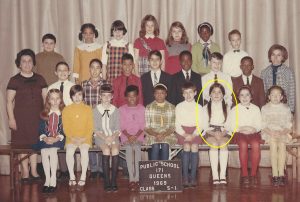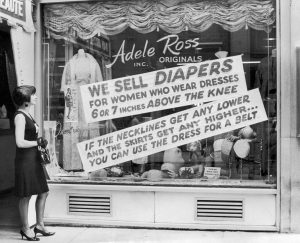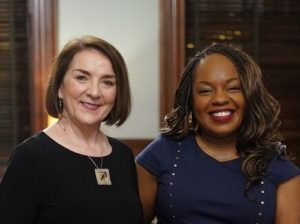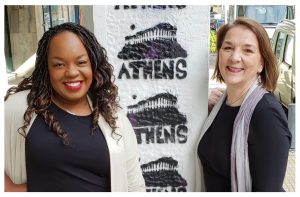Just Say NO!
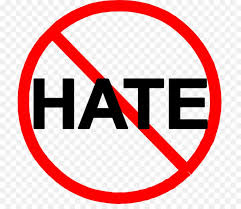
My personal mission is to make manifest the value of all people. What that means is to make it obvious that Black lives matter, that no human is illegal, and that all of us—regardless of our gender identity or expression—all of us—have the right to “life, liberty and the pursuit of happiness.” When Thomas Jefferson penned those words he certainly would not have agreed with my mission as his was a highly qualified and contradictory set of principles. That does not mean that we should disregard the inspirational words that fueled a monumental political shift. Nor does it mean that we should ascribe presentist notions to ancient interpretations of humanity and human rights. What it does mean is that as we evolve—biologically, intellectually, and spiritually, our ability to comprehend complex notions of relationships expands. Ideally, we evolve. In reality, members of various species evolved at different rates. (Not all fish began crawling up river banks as amphibians on the same day, for example.)
Interdependent Collaboration

The cornerstone of my work is interdependent collaboration. A group of human beings agree that they are better off when every one of them contributes to the greater good. Further, those collaborations are better—more successful—when those groups are comprised of diverse people. People of diverse ages, races, ethnicities, religions, sexual orientations, and etc. Such collaborations cannot succeed if members of any sub-group have greater access to equality than the others. The rules of engagement must be based on equity for the group to experience sustained success. Oh, there are countless groups that have had success for a while without being even remotely equitable, but not for any extended period of time. The relational part of this concept is being inclusive. I love this word! I have been sharing for years how inclusion requires action; more than an invitation, it requires that I ask questions about your preferences and really listen to and value your perspective. This is not possible if someone believes that they are superior to any other member of the group. Perhaps one member of the group is excellent at math and another is excellent at writing and another is excellent at strategic planning. They can all contribute their unique skills, knowledge and talents to the success of the group, but no one is more valuable than anyone else. I insist that we also include access to this list. If the group is not accessible—physically and otherwise, it cannot be inclusive. Period.
Communicate!
In order for interdependent collaboration to succeed, people need to communicate clearly, honestly, and openly. This is never easy. The primary barrier to being truly inclusive is the inability to effectively communicate. I have facilitated many hundreds of workshops on inclusive communication, supervision and management. What I have observed is that most people have never learned how to communicate successfully and effectively. All of the fracas about DEIA initiatives being ineffective in organizations, (Not to mention the vitriolic demonization of DEIA which has no basis in reality and intentionally distorts the meaning of these words and concepts.) stems from identifying organizations where DEIA initiatives were never effectively implemented in the first place. (I have been invited to come in and clean up messes in many organizations that had less than successful DEIA launches.) So, if the media focuses on the failures and those without extensive experience in this profession rant about how DEIA needs to be overhauled, I have to ask, “What are your sources?”
I will not sit by silently while our world is destroyed by those who have figured out how to divide and conquer through controlling mass communication. The internet continues to offer us extraordinary benefits. It is also a very dangerous tool which has been used to manipulate and disenfranchise people by distorting, disrupting, destroying, and denying facts.
Many friends and family members have been checking in to see how I am holding up in the midst of the overt assault on my profession. I am as disgusted, enraged, and demoralized as are most rational, compassionate human beings by the acts being perpetrated by a small group of people. But (there is no ‘yes, and’ here), I will not comply in advance. I will not be censored. I will not stop telling the truth and sharing history and information. I will just say ‘NO’ to anyone who suggests that I should tolerate racism, sexism, and any form of hate based on a person’s characteristics, affinities or the location of their birth. I will just say ‘NO’ to anyone who suggests that I pivot (although I am extremely pivotal) to another topic in my writing and work. I will just say ‘NO’ to those who are amplifying the lies and the hatred and the disinformation.
What Can You Do?
We are at a crossroads. Federal employees are being put on administrative leave for having attended DEAI workshops, DEAI programs are being dismantled and people are being fired, organizations are deleting the DEIA pages and messaging from their websites. People are reaching out to and asking me how to respond to this. I recommend that you respond according to how your are directly impacted and to assess any potential risk that you might face as a result of your actions.
A diverse coalition representing the nation’s leading academics and higher education officials, restaurant workers, and the City of Baltimore has filed a federal complaint to block anti-DEIA actions by the current Republican Administration.

People are signing petitions, making telephone calls, visiting their Senators and Representatives at their offices, and participating in peaceful protests. Find the actions that are the most effective for you. I do recommend making those actions ‘stretch goals.’ Meaning that they require you to make some effort and perhaps move outside of your comfort zone. If you are uncomfortable with the current assault on human and civil rights then taking action to end those assaults will lessen your discomfort.
I treasure our interdependent collaborations and will fight to keep our group diverse, equitable, inclusive, and accessible. I urge you to join me and stand up for the rights of others—for the rights of all of us—and just say ‘NO’ to the fascists who are working around the clock to strip us of our humanity, our dignity, and our rights.
What Do You Think?

Please respond and let me know if you read this and what you think. Also, please share this message with others, if you agree with it, by reposting it on social media and forwarding this email. It is imperative that we control and drive our communication. If each of us promotes, amplifies, and disseminates messages of inclusion and love we will diminish the constant attention being given to lies and hate. Also, when faced with strategies designed to isolate us and make us feel that we are defenseless it is critical that we remain connected and express our love and support for one another. I would love to hear from you and to know how you are managing.
You are not alone.
Onward!
~ Wendy
Join me at BlueSky @wwilloww.bsky.social

